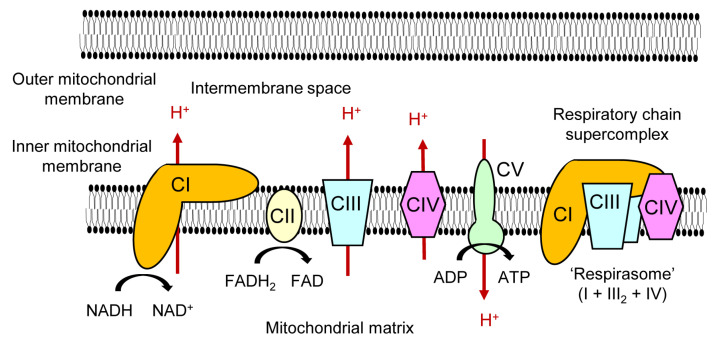Figure 1.
Mitochondrial OXPHOS complexes and a respiratory chain supercomplex. OXPHOS is carried out by five molecular complexes in the inner mitochondrial membrane, namely complex I (NADH ubiquinone oxidoreductase/NADH dehydrogenase; CI), complex II (succinate ubiquinone oxidoreductase/succinate dehydrogenase; CII), complex III (ubiquinol cytochrome c oxidoreductase/cytochrome bc1 complex; CIII), complex IV (cytochrome c oxidase; CIV), and complex V (ATP synthase; CV). Complexes I–IV are responsible for transferring electrons from NADH or FADH2 to molecular oxygen. In the process, protons (H+) translocate across the inner mitochondrial membrane from the mitochondrial matrix to the intermembrane space. The established proton gradient is essential for ATP generation by complex V. The movement of protons is indicated by red arrows. A certain portion of the mitochondrial respiratory chain complexes form a higher-order structure called a ‘supercomplex’. The supercomplex formed by one CI, two CIIIs, and one CIV is called ‘respirasome’.

